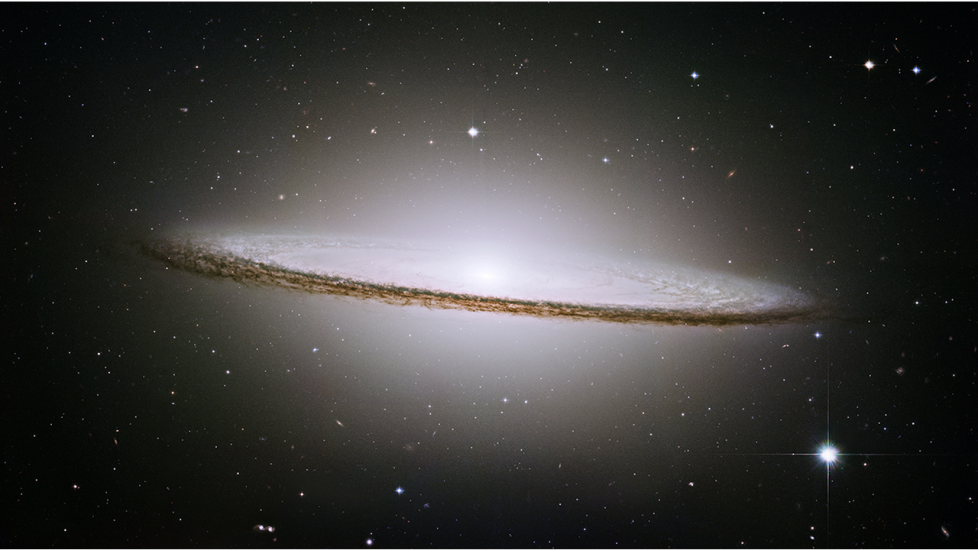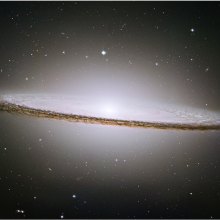-
According to NASA:
Resembling a wide-brimmed hat with a tall bulge at the center, galaxy M104 is nicknamed the Sombrero Galaxy. Far larger than any hat on Earth, this Sombrero is 50,000 light-years wide. We see the galaxy nearly edge-on, so the dark dust in its pancake-like disk appears to bisect a large, white, rounded core of stars. Roughly 29 million light-years away, the Sombrero can be spotted with a modest telescope in the constellation Virgo.
Using Hubble, a team of astronomers led by John Kormendy of the University of Hawaii found evidence of a supermassive black hole at the center of the Sombrero Galaxy. Estimated to be as massive as a billion Suns, it's one of the heftiest black holes in the neighboring universe.
Hubble observations also reveal that the Sombrero Galaxy includes nearly 2,000 globular clusters — 10 times more than in our galaxy. Globular clusters are giant, spherical-shaped groups of stars that are sometimes older than the galaxy in which they reside. The Sombrero's globular clusters range from 10 billion to 13 billion years old, similar to those in the Milky Way.
Several teams of astronomers have used Hubble and telescopes on the ground to study the Sombrero's globular clusters. They've found that some clusters are rich in elements heavier than helium (which astronomers call "metals") and some are poor. Among other findings, the observations reveal that the "metal-rich" clusters are concentrated in the galaxy's bulge and that they are typically smaller than the "metal-poor" ones. Such studies are helping astronomers figure out how ancient globular clusters developed early in the universe's history.

